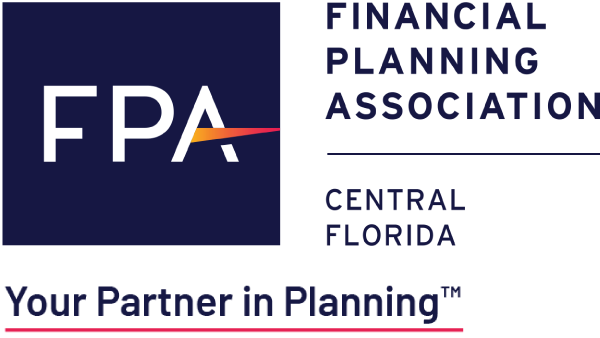
Taking Advantage of the Federal Tax Filing Extension

The pandemic-stricken American public had reason to emit a deep sigh of relief this spring after the U.S. Treasury Department announced a timely — and in many cases urgently needed — postponement of the deadline for filing 2019 federal income tax returns.
As part of the CARES ACT enacted in late March to provide individuals, families and businesses with emergency financial relief, the U.S. government postponed the 2019 federal income tax filing and payment deadline from April 15 to July 15, 2020. As welcome as the extension is for taxpayers, particularly those experiencing a high level of financial strain as a result of the COVID-19 crisis, there’s more to it than meets the eye — and, perhaps, more benefits to be reaped by people who understand some of the steps they can make to take full advantage of it.
First, there are the obvious benefits. “The filing [extension], and more importantly, the payment extension, is an opportunity to keep more cash on hand during these difficult times,” says FPA member Marianela Collado, a CERTIFIED FINANCIAL PLANNER™ professional with Tobias Financial Advisors in Plantation, Fla. Instead of paying whatever additional income tax they owe by April 15, people can hang onto that cash until July 15, the federal tax filing and payment deadline.
As she notes, people can still file their federal tax returns electronically and in doing so, specify that any amount they owe be withdrawn on July 15 (or whatever date they prefer before then). “Just be sure you have enough money earmarked to cover that tax payment when it’s due,” advises Collado.
For people who pay federal taxes on a quarterly basis, the July 15 extension applies to first quarter 2020 estimated taxes. However, second quarter 2020 estimated taxes still are due June 15, 2020.
On the state tax policy front, all states with an income tax also have extended their filing and payment deadlines, in most cases to align with the federal extension, with a handful of exceptions. To access a comprehensive listing of state extension dates, visit the American Institute of Certified Public Accountants COVID-19 resource page.
Another potential benefit of the filing extension comes in the context of the Economic Impact Payments included in the CARES Act.These so-called stimulus payments are based on an individual’s or a couple’s adjusted gross income (AGI) for the most recent tax year in which they filed tax returns — either 2019 or 2018. If the AGI was lower for an individual or couple in 2018 than in 2019, it could behoove them to wait to file their 2019 returns, so the Treasury Dept. uses their 2018 AGI figure to determine the amount of their Economic Income Payment. The lower AGI figure could in turn make them eligible for a higher stimulus payment. Before deciding on a course of action, it’s a good idea to consult a tax and/or financial professional for guidance. Most financial and tax professionals are working through the COVID-19 crisis and are available by phone, email, video conference, etc. To find a CERTIFIED FINANCIAL PLANNER™ professional in your area, check out FPA’s searchable national database at www.PlannerSearch.org.
People who expect to receive a tax refund for the 2019 tax year should file their 2019 returns “sooner rather than later” so they can get their refund quicker, says FPA member Sean M. Pearson, CFP® based in Conshohocken, Pa.
The only instance in which “the sooner, the better” rule of thumb for people expecting a tax refund may not apply has to do with Economic Income Payment eligibility. If, by delaying filing their 2019 tax returns, a taxpayer stands to reap a higher Economic Income Payment (because that payment would then be based on their 2018 AGI), and the difference in the amount of their potential Economic Income Payment is more than the refund they would get via their 2019 returns, Collado explains, then it would make sense to wait until the Economic Income Payment arrives before filing 2019 returns. That way, they could potentially get a higher Economic Income Payment based on their lower 2018 AGI, and are still in line for a refund from their 2019 returns, once those are filed. Here’s another instance where it’s wise to consult a tax professional for guidance.
In extending the federal tax filing and payment deadline for the 2019 tax year from April 15 to July 15, Uncle Sam likewise extended the window during which people can make 2019 contributions to IRAs, Roth IRAs, health savings accounts, Solo 401(k)s, SEP IRAs and the like. “This is a great thing,” says Collado, “because it gives people more time to assess their cash situation and figure out whether they can in fact make that extra HSA contribution or IRA contribution. It gives people a chance to get a clearer picture of where they stand, and an opportunity to still move the needle on their 2019 tax returns.”
For example, if, come June or early July, a person or a couple takes stock of their cash situation and (preferably with guidance from a financial professional) determines they have the financial wherewithal to increase their contribution to an HSA, IRA, 401(k) or some other tax-favored vehicle, the extension provides them the extra time to make that determination and execute that maneuver, says Collado. “Some of these contributions affect the prior-year tax bills, so having more time for hindsight is an incredible opportunity.”

